Assuming physical fitness is a priority for you, you have undoubtedly pondered this same subject on prior occasions. After all, many people suggest taking muscle dips. They are an effective way to train muscle groups using just your body weight. Here, we’ll further detail the mechanics of muscle dips, the advantages of triceps dips, and the proper way to do them.
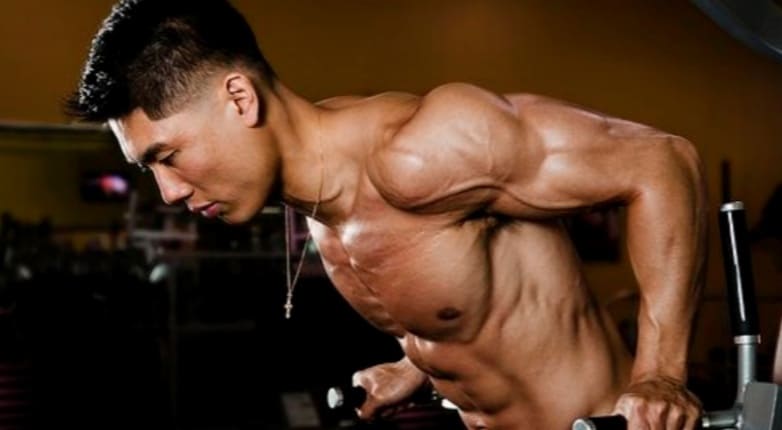
Image source: Pinterest
What Are Dips?
With little effort, dips can strengthen the arms, shoulders, and chest; hence, they target muscles. The pectoral muscles in the chest are the principal movers in this exercise; thus, they are the first to work hard.
Leaning your body forward slightly can draw even more attention to your chest. As a result, your chest should be almost parallel to the floor while your upper body is slightly bent over.
What Muscles Do Dips Work?
Dips are a compound exercise that helps build strength. Compound motions use several joints and muscles all at once. They provide many advantages by targeting a specific muscle group or joint in isolation from others. The back, shoulders, triceps, and biceps, as well as the lower chest and arm muscles, get a good workout with a dip since you employ your body weight.
The triceps dip should be your first and primary exercise. Your triceps have three separate heads: the medial, lateral, and long. These muscles control the shoulder joint’s stability and the arm’s extension.
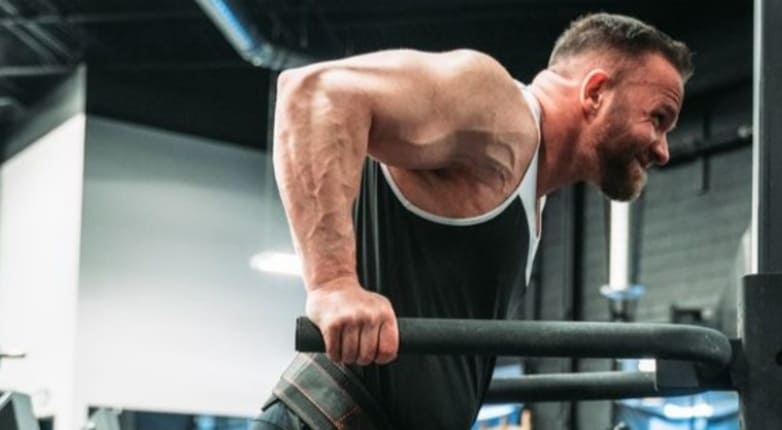
Image source: Pinterest
A person’s pectoralis major, or chest, is the secondary muscle responsible for dips. Flexing and turning the arms are functions of the major and minor pectoralis, which comprise the pecs together. Adjusting your body posture may make your chest stand out more or less when you dip.
Dips are a great exercise to strengthen your shoulders. Each of your three deltoid muscles — the anterior, medial, and posterior — contributes to your shoulder’s stability and rotation in addition to your arm’s flexion and extension. In addition, the rhomboid muscle, which contracts to bring the shoulder blades down, is also one of the several back muscles worked out by dips.
A Variety of Dips and How to Do Them
Now that we’ve covered the muscles used for dips, let’s move on to the many varieties and proper techniques. Some common dips include:
#1) Chest Dips
While I’ll demonstrate this kind of dip on a captain’s chair, the technique is equally applicable whether you like to begin on a countertop or a series of elevated benches or chairs.
- Grab the handles and set your feet on the footrests as a starting point.
- Get your arms and legs erect and your feet off the floor. Always maintain a little angle between your wrists and shoulders. The majority of individuals will cross their legs and bow at the knees.
- As you lower yourself, lean forward ever-so-slightly.
- Put an end to the motion when your elbow is parallel to, or slightly below, the floor.
- Push yourself up to get back to where you started, thus completing the process of making your dip muscles work.
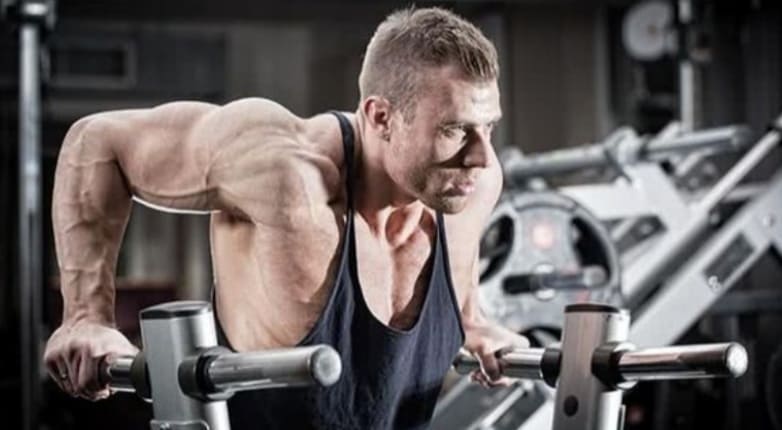
Image source: Pinterest
#2) Triceps Dips
Any triceps routine would benefit from including triceps dips on a captain’s chair. Staying upright — no slouching — is the one thing you would alter. This will ensure that your triceps, not your chest, are the center of attention.
#3) Double Bench Dips (Triceps Focus)
Here, I will explain how to do bench dips. This is a dip variation that emphasizes the triceps first.
- Set up a crossbar consisting of two seats.
- Lie on your side and, palms facing you, hold the edge of the seat or bench.
- Use the adjacent seat or bench as a footrest.
- Straighten your arms and use your core to stabilize as you lift yourself.
- Here, it would help if you lowered yourself until your elbows formed a right angle. (Your limb will resemble the numeral seven.)
- You should now be able to push yourself back up to where you were before.
#4) Weighted Dips
You may increase the difficulty of dips by adding weight. Depending on your dip technique, you can do this in various ways. A weight belt might be a valuable accessory for dip routines. A weightlifting belt is quite different from this. The former comes with a chain you can fasten by looping it between weight plates.
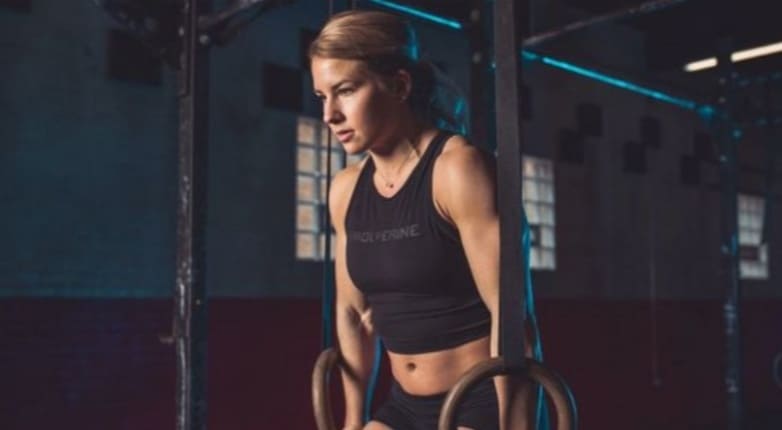
Image source: Pinterest
Squats, deadlifts, and other complex movements benefit from the latter. Fasten the locking mechanism once you’ve attached the extra plates to your weight belt and around your waist. Go ahead and do the dips as you always have. Carefully set a weight plate on your lap after sitting on a bench or chair. A towel may be helpful, too.
#5) Other Dips Variations
- Band-Assisted Dips: In this variation, you perform dips while a band supports you on the captain’s chair. Put your hands on the captain’s chair handles, position a band around each, and then put your knees in the middle of the band to perform the exercise.
- Ring Dips: This more advanced type of dip performed on gymnastic rings presents a continual test to the muscles.
Reasons to Incorporate Dips Into Your Exercise Routine
Dip exercise muscles worked in a gym offer an amusing addition to your gym regimen. They can work wonders when done regularly. Let me explain:
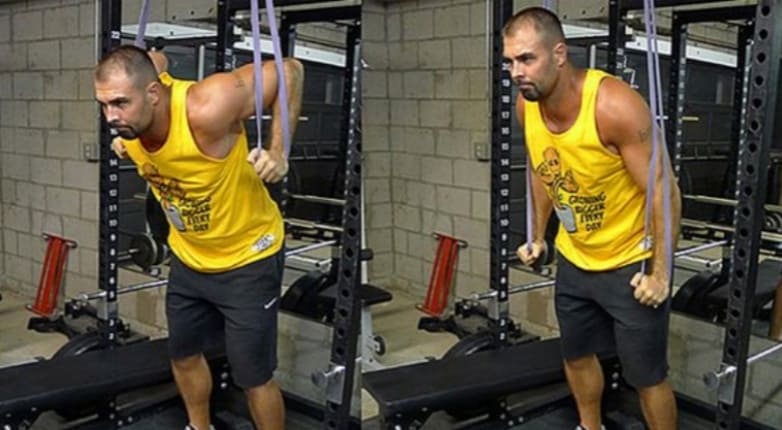
Image source: Pinterest
- #1) Helps Build and Maintain Strong Muscles
Using more muscle groups with strength training and compound motions is the best way to build functional strength. Increased muscle activation may improve strength and muscular mass. Strength training with dips is a great way to define your arms and chest and gain muscle in your upper body.
- #2) Promotes Healthy Joints
When done correctly, dips inherently require a complete range of motion of the arms and shoulders. Joint strength training is possible if done correctly and within one’s capabilities. Injuries, aches, and pains in the joints may lessen with this.
- #3) Builds Lean Muscle
Dips are great because they engage two sets of muscles simultaneously. They close the kinetic chain workout. Kinetic chain exercises include pressing one’s hands or feet against a stationary object, such as a bench or parallel bars. Explicitly targeting your triceps and lower chest, these workouts are great since they isolate specific muscles while simultaneously working out several symmetrical muscle groups.

Image source: Pinterest
Basic Errors With Dips
Not everyone gets this exercise flawlessly on their first try. Some common errors that you could come across include:
- Raising Your Shoulders off the Ground: Instead of strengthening the muscles you want to work, you can injure yourself in the neck and shoulders if you allow your shoulders to naturally shrug up toward your ears. This makes the motion less effective and puts more strain on the shoulder joint.
- Repeats of Half a Rep: The bar dip is a heavy workout, so skipping sets is tempting to get more repetitions. That’s a bad idea. Instead, focus on fully extending your range of motion (per your mobility). To lighten the load, use a resistance band if the motion is too strenuous.
- Losing Their Shape: The most frequent way to ruin your bar dips depends on momentum instead of controlled, focused muscle activation. This means swinging your body to finish the action, arching your lower back, and flaring your elbows to the sides.
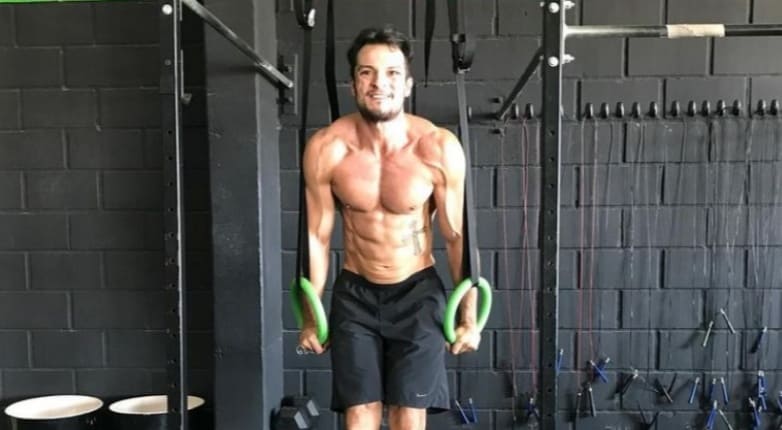
Image source: Pinterest
Bottom Line
Muscle dips engage most of the upper body, with the chest and triceps taking center stage. Depending on your objectives, adding dips to your upper-body exercises is a great way to focus on the chest or triceps. Just a friendly reminder about dips:
- A solid chair or bench is all you need for these simple exercises.
- When done correctly, they promote better joint health, bigger and stronger muscles, and more fluid movements.
- Bend forward so you can see the chest. Maintain a vertical position to target the triceps.
- Keep your shoulders back and your body straight, and use your whole range of motion to your advantage. You can protect yourself against dip-related injuries by doing this.
